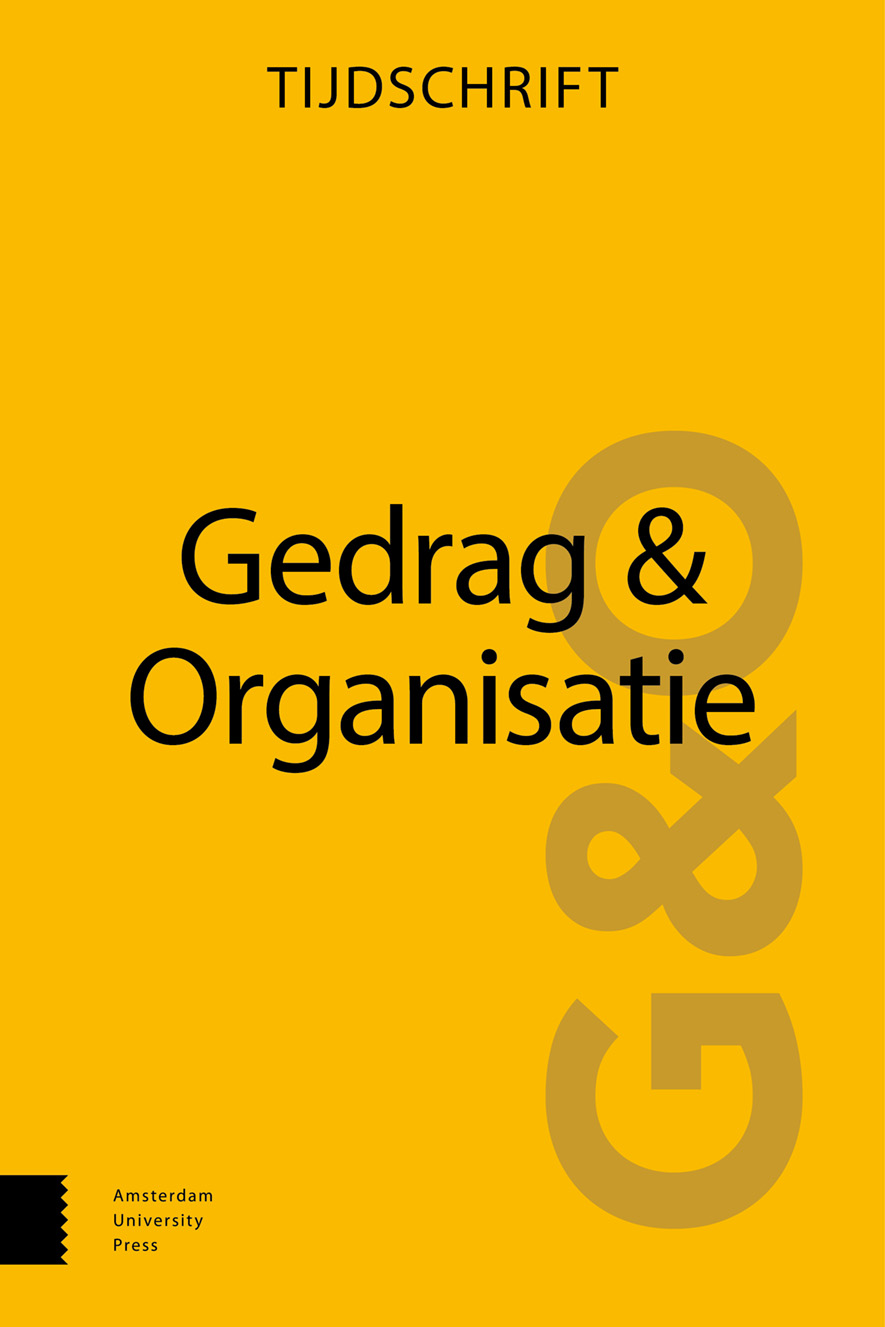- Home
- A-Z Publications
- Gedrag & Organisatie
- Previous Issues
- Volume 21, Issue 2, 2008
Gedrag & Organisatie - Volume 21, Issue 2, 2008
Volume 21, Issue 2, 2008
Language:
Dutch
-
-
oa Baanonzekerheid tijdens een herstructurering: samenhangen met vitaliteit en emotionele uitputting
More LessAuthors: Nele De Cuyper, Yasmin Handaja & Hans De WitteJob insecurity during a restructuring: associations with engagement and emotional exhaustion Job insecurity during a restructuring: associations with engagement and emotional exhaustion N. De Cuyper, Y. Handaja & H. De Witte, Gedrag & Organisatie, volume 21, June 2008, nr. 2, pp. 97-112 The present study aims to investigate subjective and objective job insecurity in relation to well-being (engagement and emotional exhau Read More
-
-
-
oa Van conflictescalatie tot pesterijen op het werk: een analyse met de conflicthanteringstijlen uit de Dual Concern Theorie
More LessAuthors: Elfi Baillien, Inge Neyens, Hans De Witte & Guy NotelaersFrom conflict escalation to workplace bullying: an analysis with the conflict management styles of the Dual Concern Theory From conflict escalation to workplace bullying: an analysis with the conflict management styles of the Dual Concern Theory E. Baillien, I. Neyens, H. De Witte & G. Notelaers, Gedrag & Organisatie, volume 21, June 2008, nr. 2, pp. 113-136 Various studies report a relationship between conflicts and conflict escal Read More
-
-
-
oa Emotieregulatie en burnout bij ziekenverzorgenden
More LessAuthors: Lilian Lechner, Thea Steinvoorte & Gérard Näring[Summary This study analysed whether, amongst health care providers in a nursing homes setting, there is a relationship between, on the hand, work demands, autonomy, lack of social support and emotional labor; and on the other hand, symptoms of burnout. It also analysed whether the concept of emotional labor was an additional factor that helped explain variance in burnout over and above the concepts found in the D Read More
-
-
-
oa De selecteur, de sollicitant, de samenleving en de expert: drijfveren bij de selectie van personen
More LessThe selector, the applicant, society and the expert: motives in the selection of people The selector, the applicant, society and the expert: motives in the selection of people M. Ph. Born, Gedrag & Organisatie, volume 21, June 2008, nr. 2, pp. 150-169 It is argued that the behavior of protagonists in personnel selection is influenced by a series of motivational and emotional factors. The recruiter, the applicant, society and the selectio Read More
-
-
-
oa De relatie tussen expertisediversiteit en teaminnovativiteit: de modererende werking van taakafhankelijkheid en taakflexibiliteit
More LessThe relationship between expertise diversity and team innovation: the moderating effect of task interdependence and task flexibility The relationship between expertise diversity and team innovation: the moderating effect of task interdependence and task flexibility G.S. van der Vegt, Gedrag & Organisatie, volume 21, June 2008, nr. 2, pp. 170-183 In this article we examine the joint effects of expertise diversity, task int Read More
-
-
-
oa Diversiteit en teamleren: de rol van 'faultlines' en psychologische veiligheid
More LessAuthors: Joyce Rupert & Karen A. JehnDiversity and team learning: the effect of faultlines and psychological safety Diversity and team learning: the effect of faultlines and psychological safety J. Rupert & K.A. Jehn, Gedrag & Organisatie, volume 21, June 2008, nr. 2, pp. 184-206 In this field study on 186 members in 70 management teams, we tested the relationship between perceived faultlines and different types of team learning: task, process, and social learning. T Read More
-
Volumes & issues
-
Volume 38 (2025)
-
Volume 37 (2024)
-
Volume 36 (2023)
-
Volume 35 (2022)
-
Volume 34 (2021)
-
Volume 33 (2020)
-
Volume 32 (2019)
-
Volume 31 (2018)
-
Volume 30 (2017)
-
Volume 29 (2016)
-
Volume 28 (2015)
-
Volume 27 (2014)
-
Volume 26 (2013)
-
Volume 25 (2012)
-
Volume 24 (2011)
-
Volume 23 (2010)
-
Volume 22 (2009)
-
Volume 21 (2008)
-
Volume 20 (2007)
-
Volume 19 (2006)
-
Volume 18 (2005)
-
Volume 17 (2004)
Most Read This Month
Article
content/journals/09215077
Journal
10
5
false
en


